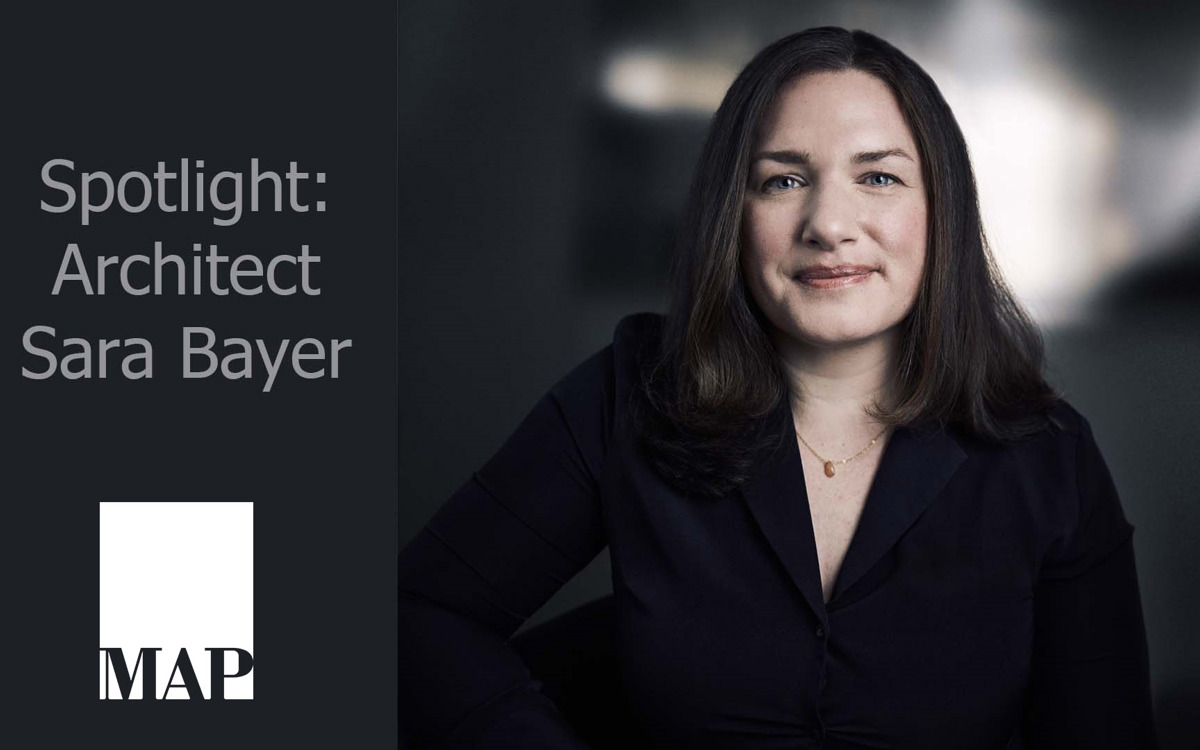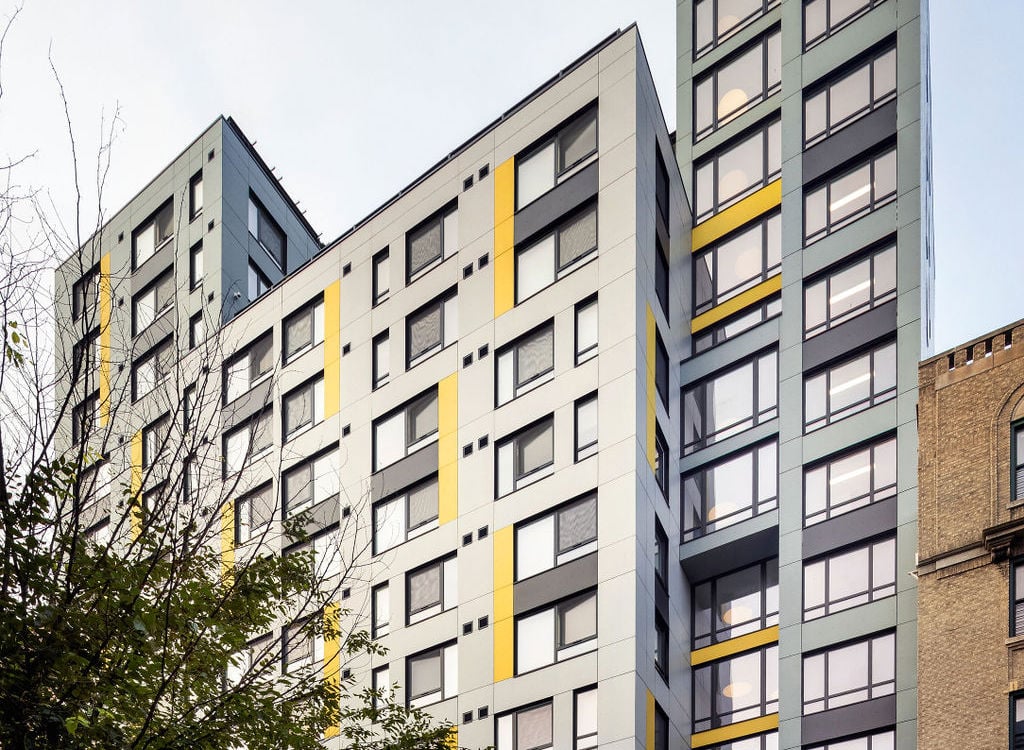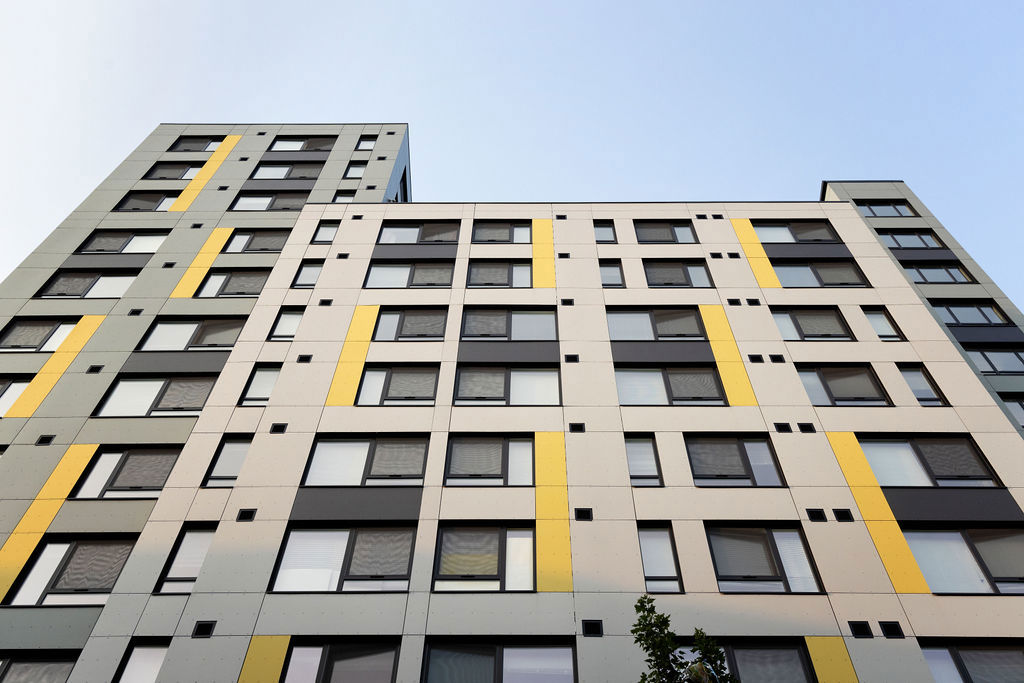
EQUITONE is wrapping up our Spotlight on Architects series and Women's History Month with Architect Sara Bayer. Sara works as an Associate Principal & Director of Sustainability at Magnusson Architecture & Planning (MAP) in New York City. She manages many of the firm's most energy efficient multifamily housing projects including two of MAP's nine NYSERDA Buildings of Excellence Award winners. She also leads the company's efforts to incorporate passive house strategies and carbon reduction methods across all their work. Sara was certified CPHC in 2016 and in 2020 she served as co-chair of the NESEA Building Energy NYC conference, and is currently serving as a board member of New York Passive House. Sara is a frequent contributor in forums focused on efficient technologies, including AIANY, NESEA, BEEX, and Passive House Accelerator; and strives to make sustainable, healthy, and uplifting design achievable for all.

EQUITONE has had the pleasure of working with Sara on the East Clarke Place Senior Residence project, a 122-unit, LEED-Platinum, affordable, senior housing a healthy and sustainable home. We are very proud to have our materials included on this outstanding building, and we wanted to know more about the person behind the project.
What inspired you to be an architect?
It’s a synergy of math, science, art, and anthropology. I also knew that architects were responsible for managing a large amount of resources, and I wanted to be a part of improving upon our use of those.
Which of your personality traits comes in handy in your career?
Patience, ability to listen, and being discerning. Architects bring experts together. You can't know as much as all the experts, but you can listen closely and give them time to explain their insights, so that you can get to the bottom of things. You have to listen deeply to everyone’s expertise so you can really make informed decisions. Only once you have listened deeply can you make the best possible judgement calls.
Who are your favorite architects?
Pier Luigi Nervi, an engineer and architect who designed biomimetic structures, in which the material expresses where the stresses actually are, making them more efficient and very beautiful.
Rafael Guastavino is an inspiring example of how America embraced good, new ideas which brought those innovators success and contributed meaningful architecture and building science advancement.
Beatrix Farrand was the first woman landscape architect, who blazed the trail for others and was a master at the journey of discovery in her gardens, using native plants and studying them extensively.
What projects have you worked on that you are most proud of?
Most of the projects I've worked on have made a contribution to the advancement of sustainable design and even helped move us in the direction towards regenerative design. I'm really honored to be a part of that. I'm also really overjoyed to be involved in so many beautiful buildings that provide good homes to those in need.
How can the building industry encourage diversity in architecture?
We need to reach a much broader range of students, and they can't just be grad students or even college students. We need to support design education at all levels and inspire young people with this work and help them see themselves in it. We need to do a better job of helping people see what an exciting profession this is and help them imagine all the ways they might be able to contribute and drive innovation and design the communities of the future. Everyone deserves a chance to be a part of that.
What advice would you give to young girls interested in architecture?
This profession is for you!
Love what you do and you will never work a day in your life.
Trust the craft – so much is revealed by drawing.
What do your family and friends think you do as an architect compared to what you really do?
It’s not often thought about in this way, but we execute laws. Architecture is a really great example of humanity’s creating important rules and societal structures, to keep people safe and healthy, and ensure we are spending our resources wisely. Market forces alone cannot do this.
What legacy do you hope your career leaves?
We're at a crucial moment in human history in terms of whether we are able to hold off the worst impacts of the climate and the biodiversity crises, and I'm practicing in a field whose work product has a direct impact on the outcome of those issues. So first, I'd like a legacy of having contributed to a better future, one where we avoid climate tipping points and move towards a regenerative impact in our work. That work could have huge implications for the lives of millions of people. I like to think I'm a part of the movement bringing a bit more science into architecture and helping the field accept more responsibility for the energy efficiency of our creations and health of those that use them. I'd also hope people think of me as a joy to work with, someone who stayed positive.
Are there any other thoughts you want to express?
I am fascinated by the progression of humanity’s understanding of the natural sciences, those in the past, but particularly the acceleration of those happening today. The way nature works is an enormous source of inspiration for all those working to design systems that work more effectively, efficiently, and beautifully. We are finding that we don’t need fossil chemicals to solve all of our problems anymore. We are finding ways to combine modern science with older traditions of understanding. I see a convergence of many learnings which point to a thriving society, all of which is actually accelerated by our current climate and diversity crisis.

A big thank you to Sara Bayer and the other architects who participated in this interview series! We hope you have enjoyed reading and learning about architects making an impact in their communities.
For more information about the East Clarke Place Senior Residence project, visit MAP's website.